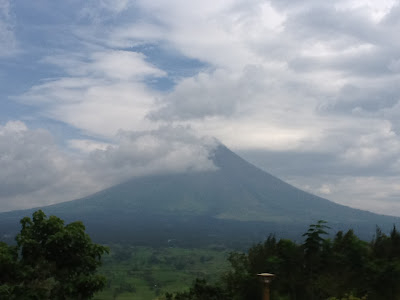 |
| Tinuktok (Tinuktuk) as prepared in Iriga, a Bicol province. |
 |
| This dish is called Tinuktuk in Bicol. |
In the Bicol Region in the Philippines, one can expect food to have leaves of the
gabi (taro) plant, be spiced with chili, and infused with coconut milk.
Tinuktok or t
inuktuk, a native food of the region, uses these basic ingredients, which makes it characteristically
Bicolano.
Tinuktok is what is known as
pinangat in the Tagalog part of Luzon island. Tinuktok may use specific seafood ingredients like shrimp, fish, crab, or even non-seafood meat like beef, pork, and chicken. Shrimp recipes for tinuktok are very popular. Any of these may be used, but they must first be mixed with minced young coconut meat before being wrapped in gabi leaves and cooked in boiling water with coconut milk, called
gata in Tagalog. The ideal recipe shrimp tinuktok is usually served spicy, but some people may prefer the non-spicy version.
Ingredients
- Your choice of shrimp, fish, crab, or a favorite meat (raw; minced)
- Coconut Milk
- Gabi (taro) leaves big enough to use as wrapper
- Minced young coconut meat
- Salt
- Pepper corns
- Fish sauce
- Red chilli
- Grass strings for tying
Procedure
Harvest your taro leaves. Ideally, they should be fresh, but if you do not have access to a taro plant, you can buy dried leaves from a Filipino store, which should have them dried. Clean the leaves before you use them. Prepare the easy shrimp recipe to be wrapped inside the taro leaves. Place three spoonfuls in the middle of a leaf. Add fish sauce or salt and pepper to taste. Wrap the taro leaf around the meat patty tightly. Use grass string to tie the preparation before cooking. To help identify the spicy wraps from the non-spicy wraps, tinuktok cooks usually tie the leaves of the spicy ones using two knots. Each shrimp recipe tinuktok should look like a little pillow.
Make as many of these little pillows as you like. When you have enough, prepare water that's been mixed with coconut milk. The thicker it is (with more coconut milk), the more coconut flavor will be absorbed by the tinuktok. Pour this mixture into a deep pan placed over a low flame or heat source. Put your tinuktok in the water. Make sure they are submerged, but it should only be shallow. Wait until it comes to a boil. Reduce the liquid a bit until the tinuktok dish is done. You can add some color to the tinuktok by adding some chili when you plate. To really enjoy this wonderful recipe shrimp tinuktok (or any of it's seafood, beef, pork, or chicken variants), you must eat it with hot white rice.


















